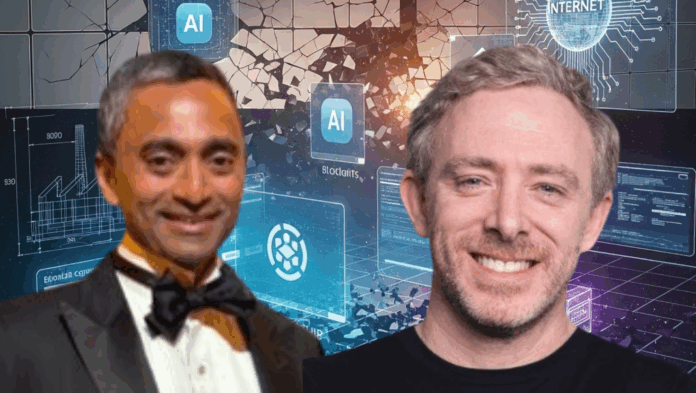A recent post from venture capitalist Chamath Palihapitiya has reignited discussion around how modern businesses are shaped, less by vision, more by the structure of the software they adopt. Writing on 8 July 2025, the former Facebook executive and founder of Social Capital described corporate design as a byproduct of software’s architecture, with job roles and workflows often moulded around tools rather than tailored to actual business needs.
He pointed to trillions spent over decades on automation software that, rather than liberating companies, locked them into rigid patterns. Citing a 2021 Harvard Business Review study, he highlighted that companies using custom built software often report margins up to 15 percent higher. The implication is clear: businesses that shape their tools tend to outperform those that adapt to off the shelf systems.
The timing of his remarks coincides with the planned 1 September launch of 8090’s Software Factory, a platform designed to support more agile, AI driven organisational models. The premise is straightforward: let firms build software around their structure instead of reshaping operations to fit existing tools.
Dominic Williams, best known for his work at DFINITY, has been making a similar case, arguing for decentralised control over digital infrastructure. Speaking last year, he described blockchain as a tool for reclaiming autonomy from large tech vendors. His Caffeine AI project carries that thinking forward, merging distributed systems with machine intelligence to allow individuals and small teams to build their own systems with minimal cost.
These ideas aren’t just floating theory. IEEE data from 2024 shows blockchain adoption in enterprise software growing 30 percent year on year. Meanwhile, frustrations with traditional software models remain common. Gartner’s 2023 findings reported that 65 percent of global enterprises feel boxed in by current platforms and forced into regular upgrades that disrupt operations rather than improve them.
Kyle Langham, another voice in this emerging conversation, has been following both Palihapitiya and Williams closely. He has used his social posts to connect the dots between AI, ownership and affordability, arguing that lowering software costs to near zero could shift workplace dynamics entirely. Langham believes we are on the edge of a world where every employee could wield software directly, without layers of approvals, licensing or dependency.
His argument finds support in a 2023 McKinsey report, which stated that 70 percent of executives view custom software as key to staying competitive in the years ahead. Meanwhile, new research published this year by RVS Media suggests that businesses using tailored solutions see a 6 percent uplift in profit performance on average, driven by data clarity, not more dashboards.
What Palihapitiya and Williams are proposing is less about scrapping software, and more about loosening its grip. Their projects, 8090 and Caffeine AI, offer different technical paths, but the message is shared: ownership of tools matters, and companies may have more room to manoeuvre than they think.
Caffeine AI is set to hold a fireside chat in San Francisco on 15 July, while 8090 is accepting signups for its preview ahead of the September launch. With sentiment shifting and pressure building on legacy vendors, both events are likely to draw attention from enterprise leaders looking for a way to rebuild from the inside out.
Dear Reader,
Ledger Life is an independent platform dedicated to covering the Internet Computer (ICP) ecosystem and beyond. We focus on real stories, builder updates, project launches, and the quiet innovations that often get missed.
We’re not backed by sponsors. We rely on readers like you.
If you find value in what we publish—whether it’s deep dives into dApps, explainers on decentralised tech, or just keeping track of what’s moving in Web3—please consider making a donation. It helps us cover costs, stay consistent, and remain truly independent.
Your support goes a long way.
🧠 ICP Principal: ins6i-d53ug-zxmgh-qvum3-r3pvl-ufcvu-bdyon-ovzdy-d26k3-lgq2v-3qe
🧾 ICP Address: f8deb966878f8b83204b251d5d799e0345ea72b8e62e8cf9da8d8830e1b3b05f
🪙 BTC Wallet: bc1pp5kuez9r2atdmrp4jmu6fxersny4uhnaxyrxau4dg7365je8sy2q9zff6p
Every contribution helps keep the lights on, the stories flowing, and the crypto clutter out.
Thank you for reading, sharing, and being part of this experiment in decentralised media.
—Team Ledger Life


